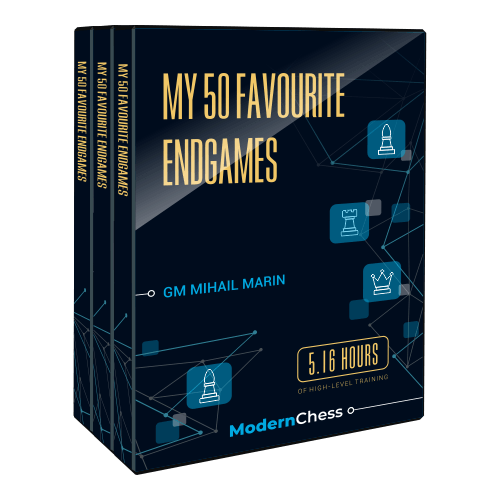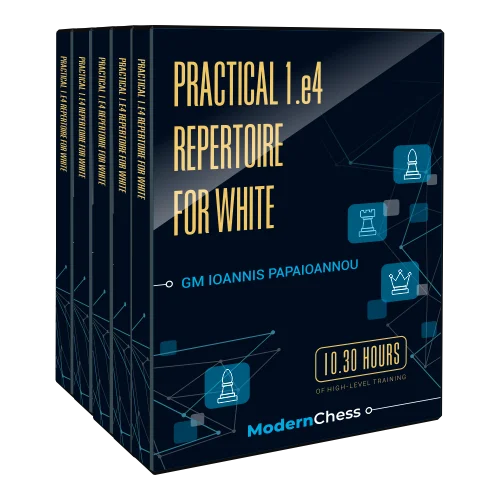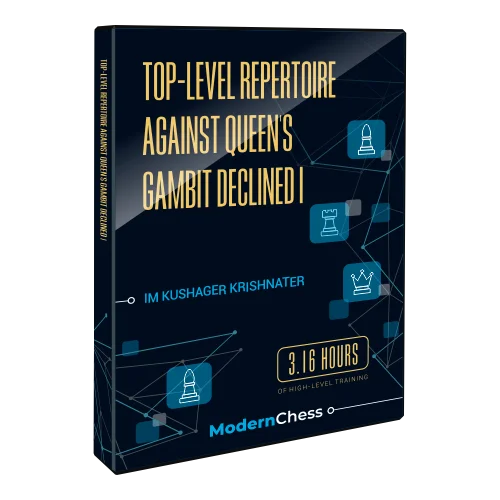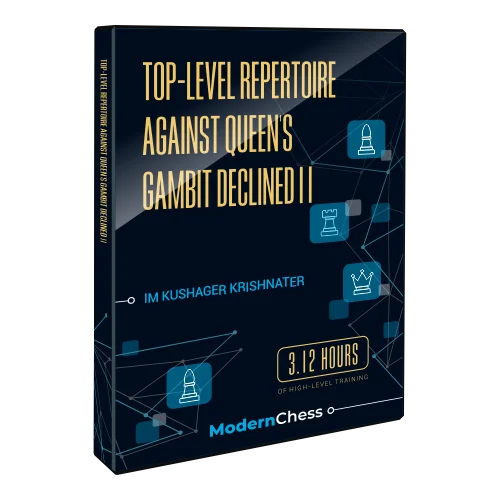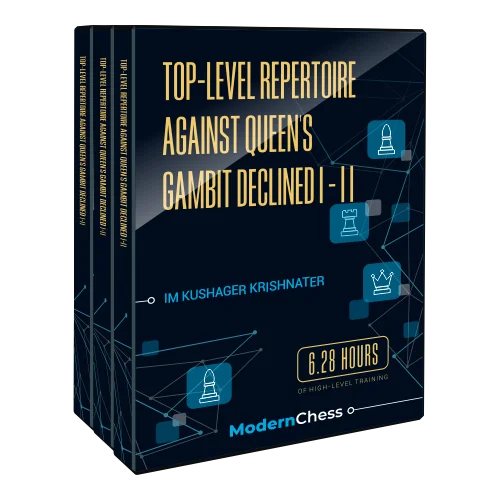GM Mihail Marin comes up with one of the most fundamental works that he has ever done! His new database My 50 Favourite Endgames is a must for everyone who looks for top-level endgame education.
GM Mihail Marin comes up with one of the most fundamental works that he has ever done! His new database My 50 Favourite Endgames is a must for everyone who looks for top-level endgame education.
The database consists of 50 carefully selected super instructive endgames and 64 associated tests. Each one of the examples (including the tests) is extensively annotated. This makes a total of 114 extensively annotated endgames!
The course also comes with a video version. The running time is 5 hours and 16 mins.
Preview by the Author
This database compiles 50 of the endgames that have imposed themselves as the most memorable to me over the decades. Part of them (13) are my own games, in which I managed to either create something special over the board or made good use of the knowledge accumulated through intense study. I was a direct witness to some of the others, but I came across most of the examples by studying old endgame books and magazines or following live modern elite tournaments.
At the concrete moment when I played or viewed and analyzed each of these games, they left a deep track in my memory, impressed and even influenced my later development.
This is not an exhaustive endgame course, as space is too tight for that. It is not a “must-know” collection, either. In fact, the level of difficulty of the vast majority of these examples is by far higher than suited for such an approach. My main aim was to acquaint the reader with the depth, beauty, and sometimes even magic of the final phase of the game.
The endgame is not at all boring. Sometimes, it can be more complex and fascinating than a middlegame position. The first time I studied the endgame systematically was in 1978, at the age of 13, under the guidance of the WGM Margareta Teodorescu, former Olympic medalist. Unfortunately, she could not work with me for more than a few months, since she soon started experiencing health problems. No matter how hard I try to intrude into the past, I do not remember any other period prior to 2000 when I dedicated so much time to studying the endgame. All these years, I used to play the final phase of the game quite accurately and felt glad each time the opponent went for mass simplifications.
I have no logical explanation for that, but in 2000 I finally felt the urge to resume my learning process, interrupted 22 years earlier. I do not exclude that this came as a consequence of my game with Vukovic, included in this database.
For at least one and a half years, I spent most of my free time studying Averbakh’s five-tome endgame monograph. In his foreword, Averbakh recommended to the reader NOT to read the book from one cover to the other, but refer to the chapters corresponding to the type of endgames that one has played or seen. This is not my working method, though. I studied a few of his volumes from the title until the price, to say so. I first read the small sections without using the board, then repeated the process at a slower pace than the first time, and then checked everything by playing the examples over the board. To be honest, I did all this as if it was an act of culture. I did it for myself, for my own intellectual and artistic satisfaction. I considered the possible improvement of my practical results in the endgame as a welcome consequence, but not as the main purpose of my sustained activity.
Fate offered me a few pleasant surprises. It frequently happened that I got to play precisely the endgames I had been studying shortly before. It could have also been my subconscious that drove me in that direction from early middlegame already.
The latter possibility is sustained by the following episode. Between 2008 and 2010 I have been coaching Daniele Vocaturo, helping him to become a grandmaster and qualify for the Wijk aan Zee B tournament among others. When analyzing together, he remarked that whenever we had a complicated middlegame, I started by mentioning which endgames would favor us and which not. Moreover, sometime after 2000, I read a similar confession by Vesselin Topalov. He, too, had the surprise of frequently entering familiar endgames after periods of intense endgame study.
The order in which I have displayed the section may seem illogical or at least arbitrary. In fact, I have used personal criteria. The order of the chapters follows the order in which I studied Averbakh’s respective volumes. As we go closer to the end, the sections become smaller, which is caused by the fact that I had not had the time to go through the last couple of volumes from cover to cover…
I have left out many of my favorite endings, due to the fact that I have published them elsewhere. Some of them were included in my book “Learn from the Legends”, most notably Karpov’s opposite-colored bishops’ endings and Fischer’s games with a good bishop versus a knight. I would make a special mention for his fourth game against Taimanov in their Candidates’ match in 1971. Others were published in other articles for Modern Chess, such as those on Andersson’s and Carlsen’s endgame technique, or the 1.d4 structures. From the latter article, the Isolani endgames with a bad bishop are the first to come up to mind. I omitted these games not only because of moral aspects. To me, it is always interesting to comment on new positions, thus deepening and widening my own chess understanding.
I recommend you study this database slowly. As mentioned, most of the examples are very complex. As usual, I have tried to accompany my variations with enough verbal comments, in order to catch the essence of the fight.
Outline:
Chapter 1. Introduction
Chapter 2. Knight vs Bishop
Chapter 3. Rook vs Bishop
Chapter 4. Same-colored Bishops Endgames
Chapter 5. Opposite-colored Bishops Endgames
Chapter 6. Rook Endgames
Chapter 7. Pawn Endgames
Chapter 8. Queen Endgames
Chapter 9. Queen vs Rook
Chapter 10. Knight Endgames
About the Author:
GM Mihail Marin [FIDE 2463]
is a Romanian chess Grandmaster and a very popular chess coach and author. Marin’s first major success in international chess was qualifying for the Interzonal in 1987.
He has won the Romanian Championships on three occasions and has played in the Chess Olympiads ten times, winning a bronze individual medal in 1988. For several years he was the editor of the magazine Chess Extra Press.
GM Mihail Marin is one of the most respected coaches in the world today having trained the young Judit Polgar and being praised for his ability to explain deep chess truths in a way improving players can understand.
